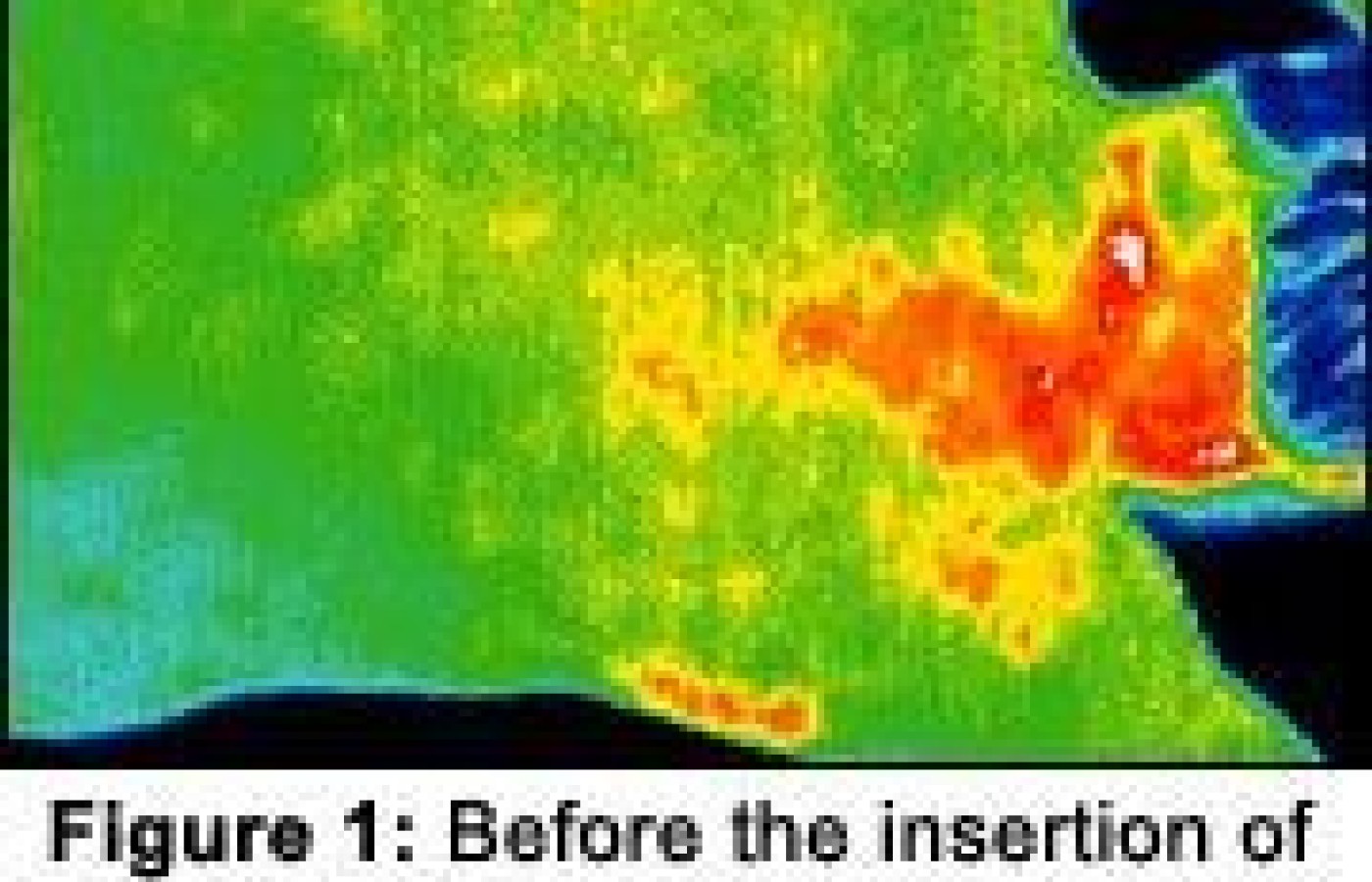Whether you accept it, avoid it or live somewhere in between, insurance coverage has become a defining issue for our profession. Patients increasingly expect to use their benefits, practitioners want to be compensated fairly for their time and expertise, and the system itself remains – at best – fragmented. The encouraging news is that coverage has expanded in meaningful ways. The challenging news is that reimbursement, across the board, remains inadequate.
How Soon Does Acupuncture Begin to Work?
How soon does acupuncture start to work after you put the needle in the acupoints? Some say it works immediately, while others argue it begins to work after the needle has been pulled out. Which is the correct answer?
At a recent dinner party, one of our guests, a lady named Tah, was seated next to our friend John. After we ate our dinner, we had a heated discussion, during which John leaned backward and tilted his chair until the two front legs were up in the air. Tah then somehow slipped her feet to the place where the two chair legs had been. When John put down his chair, one of the legs landed right on Tah's toe. Her face turned white and she started to sweat. Another of our guests, my friend Dr. Chen, an acupuncturist, immediately jumped into action. Using a needle I provided, he needled her arm. Immediately, her pain was relieved, blood rushed to her face and her face looked normal again. Afterward, she said she had felt immediate relief after the needle entered her body. This anecdotal evidence suggests that when needle is used correctly, the effect is immediate.
The important question is: Is there any scientific evidence on how soon an inserted needle starts to work? We did a study on 15 patients with pain, only inserting one needle on acupoints away from the pain area. We found that in all cases, within one minute the maximum temperature at the pain area started to decrease. The effect of the acupuncture needle was almost immediate after it was inserted.
In Figures 1-9, we present a series of infrared pictures of a patient suffering from neck pain. The pictures were taken at 0-, 2-, 4-, 6-, 8-, 10-, 12-, 14- and 27-minute intervals. The color code of the infrared pictures is as follows: white for the hottest, then red, yellow, green, blue, and the coldest in black.
We can see that the temperature of the back of the patient's neck gradually decreases. The maximum temperature at the hottest spot at back of the neck was first shown as white in color. Then it became red, yellow, and finally green. Numerically, the maximum temperature at the middle region of the neck decreased from 40.77 C (105.38 F), to 40.40 C (104.72 F), 40.27 C (104.48F), 39.98 C (103.96 F), 40.21 C (104.37 F), 39.27 C (102.68 F), 39.17 C (102.50 F), 38.85 C (101.93 F), and 37.78 C (100.16 F), respectively, during the above-noted time sequence.
There was a total decrease of 3 degrees Celsius (4 degrees F) at this hottest spot. The normal fluctuation of temperature of the skin was known to be 0.1 degrees Celcius to 0.2 degrees Celcius. So, the decrease of maximum temperature of the pain area was at least 10 times greater than normal fluctuation of skin temperature. Furthermore, the decrease of the maximum temperature in time can be fitted with an exponential curve. The half-decay time of the exponential diminishing of the maximum temperature at the pain area ranged from 6.4 minutes to 63.6 minutes for the 15 patients we studied.
The next important question is: What causes this exponential decrease of temperature in the pain area from acupuncture? Many studies have established the fact that acupuncture can increase the hormone supply of endorphin, which helps patients to endure pain. But our study suggests there is a greater increase in endorphins when inserting the needle. The effect of acupuncture is on the area where the pain originates. So, acupuncture not only makes our nerve system relatively insensitive to the pain, but it also actually changes the physiological functional of the place where the pain originates. Thus, we may have reason to believe that acupuncture not only relieves pain, but also cures the pain as well.
Why is the decrease of maximum temperature exponential? Exponential decay is quite general in nature. If the mechanism of pain relief is of statistical nature as dictated by quantum mechanical reactions, the decay is definitely exponential. For a more detailed discussion of the role that quantum theory plays in acupuncture and health, please consult Biophysics Basis for Acupuncture and Health.
The upper back of a patient who suffered neck pain
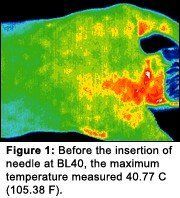
|
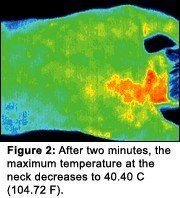
|
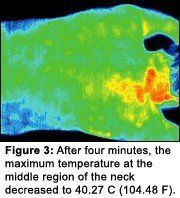
|
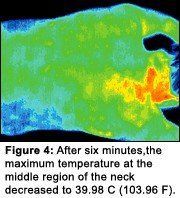
|

|
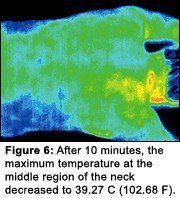
|
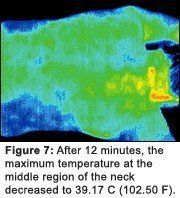
|
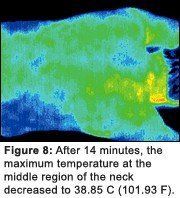
|
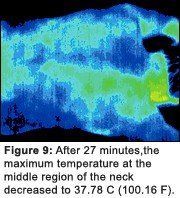
| |
In conclusion, it is our opinion that the infrared imaging system can be used an objective quantitative measure of the pain of a patient. The higher temperature at the pain area compared to the surrounding normal skin temperature could be used a quantitative indication of the severity of the pain. The relief of pain then follows from the diminishing of temperature difference between the pain area and its surrounding skin temperature.
